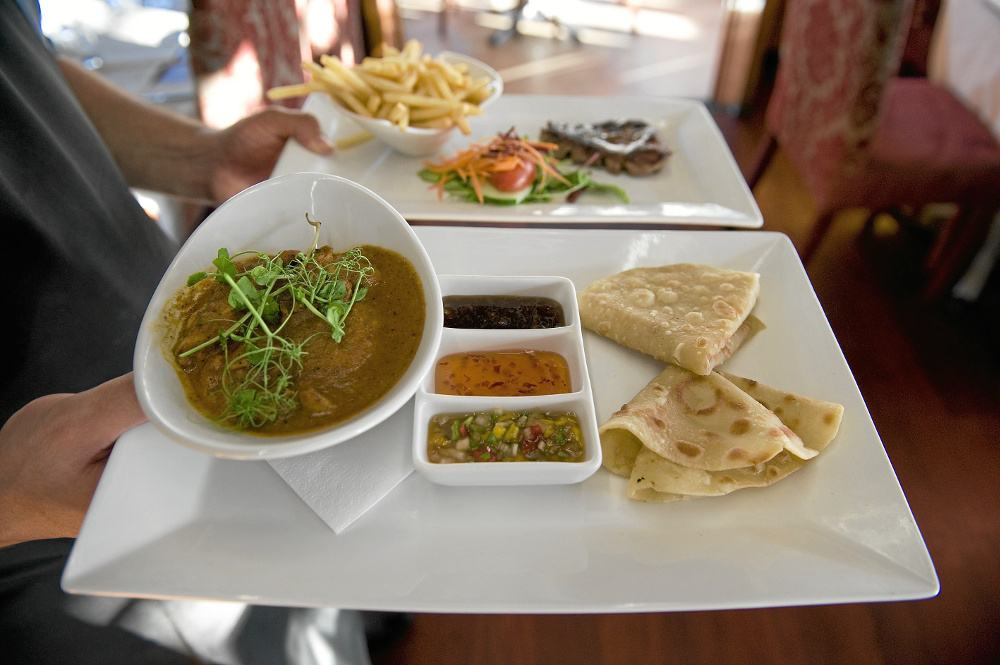Carbohydrates are suddenly back in fashion in Cape Town as the city overflows with “carbo-loading” cyclists gearing up for the 109km Cycle Tour of the Peninsula.
The health clubs are advising that you need 30g to 60g of carbohydrates for every hour of cycling. Gyms are recommending for “post-race munchies” burgers and wraps, energy drinks and fruit juice — a full horror list of carbohydrates for the ever-growing number of converts to low- and no-carb diets.
It may have all started with a morbidly obese London undertaker, one William Banting, according to The Real Meal Revolution by Prof Tim Noakes, nutritionist Sally-Ann Creed, and “chef-athletes” David Grier and Jonno Proudfoot.
The low-carb high-fat (LCHF) diet is also known as Banting, with strong similarities to John Durant’s “paleo diet” and the Atkins regimen. Banting made it into the Oxford dictionary, though by its definition “Bantingism” also excludes fat from the diet. William Banting thrived on Dr William Harvey’s eating plan and lived to a ripe old age.
There is a lot of evolutionary mythology and mumbo jumbo around carb-obsessed diets. I believe in a balanced diet of all the food groups. But whatever the scepticism, limiting carbs to between 25g and 100g a day, while still satisfying the body’s need to feel sated, does seem to work for weight loss, though probably not for the pseudoscience reasons given by its pedlars.
Just as artisanal bread-making is exploding on the local scene, along comes the demonising of carbs. It must be equally threatening if you’re in the beer business. After all, beer has long been considered liquid bread.
With this in mind, chef-patrons Doekle Vleitman and Rejeanne Vleitman of Den Anker restaurant, recognised for its Belgian beer and potatoes, and followers of the palaeo/LCHF diet at home, are introducing a palaeo menu on weekends.
 Den Anker's palaeo menu.Photograph by David Harrison, M&G
Den Anker's palaeo menu.Photograph by David Harrison, M&G
The Vleitmans and Lies Bouckaert, founder of Den Anker with her late husband Denis, invited me to try their carb-free lunch menu, with the option to “drink your carbs” instead of eating them. In pursuit of a balanced diet, naturally I had to drink the beer pairings with the food courses.
I expected mussels sans pommes frites, marrow bones without baguette, and ice cream without waffles. What I got was more inventive.
For starters, seared tuna with sesame seeds, thinly sliced radish, a sprinkling of tiny shrimps (a distinctly Belgian touch) on a spread of “Banting mayonnaise”, which is made without using seed oils, and spiked with wasabi.
The carbohydrates came in the form of what my Antwerpenaar father called a bolleke, a glass of De Koninck beer, amber-coloured and top fermented from barley and organic Saaz-Saaz hops from the Czech Republic. No added maize or brewing sugars keeps this beer at 3.2g of carbohydrate per 100ml.
Then there was a choice of Wagyu steak tartare (an excellent option for protein junkies) or perfectly seared salmon with cauliflower mash, green asparagus (a Flemish passion) and caramelised shallots.
The carbs for these were a Maredous Blonde soft, malted beer (4.6g of carbohydrate per 100ml) and my favourite Belgian tipple, Duvel (3.8g of carbohydrate per 100ml). If you know how to pour this one the way I was taught in Belgium, a standard Duvel bottle just fills the glass with a large creamy head of froth coming up two-thirds of the glass to the rim.
It is beer refermented in the bottle for a fortnight in warm brewery cellars and then chilled for six weeks. The total brewing time for a Duvel is 90 days.
Dessert was a Liefmans sorbet from Liefmans Fruitesse beer (5g of carbohydrate per 100ml), a beer I personally can’t abide, along with chocolate cheese (not cheesecake), a block of which I once saw quivering in the glass counter of a Brussels fromagerie.
Liefmans is made with cherries, strawberries, raspberries, elderbe-rries and bilberries.
Den Anker has taken a lead, and we can expect to see more chefs, restaurants and menus responding to the changing eating habits of the well fed.
Den Anker, Pierhead, V&A Waterfront, Cape Town. The paleo menu will be available weekends starting March 14
Wine of the week
Felicité Pinot Noir 2012 (R80)
Pinot noir – the "heartbreak grape", as some call it. Sometimes it's winelovers who are brought to tears, but mostly producers, because it can be difficult to get pinot right beyond its great French homeland of Burgundy.
South African pinot has grown marvellously over the past decade or so, in quantity as well as quality, with the Newton Johnson family-owned estate among the undoubted leaders.
This wine is made in their cellar in the Hemel-en-Aarde area (near Hermanus on the Cape south coast), by husband-and-wife team Gordon and Nadia Johnson.
Call it the poor relation of the increasingly famous Newton Johnson pinots, but don't sneer! Rather welcome one of the few good pinots at a relatively affordable price. Most of Felicité's grapes come from the Robertson district, where Nadia's family has cultivated vines for six generations.
The warm origin gives a ripe, deliciously fruit-filled and easy-going generosity to the wine.
Pinot noir is lighter in colour than many reds, and less toughened by the forceful tannins that can make serious wines from cabernet or shiraz mouth-puckering in youth.
This means that on warm summer evenings Felicité will welcome cooling down in the fridge before yielding up its charms. — Tim James